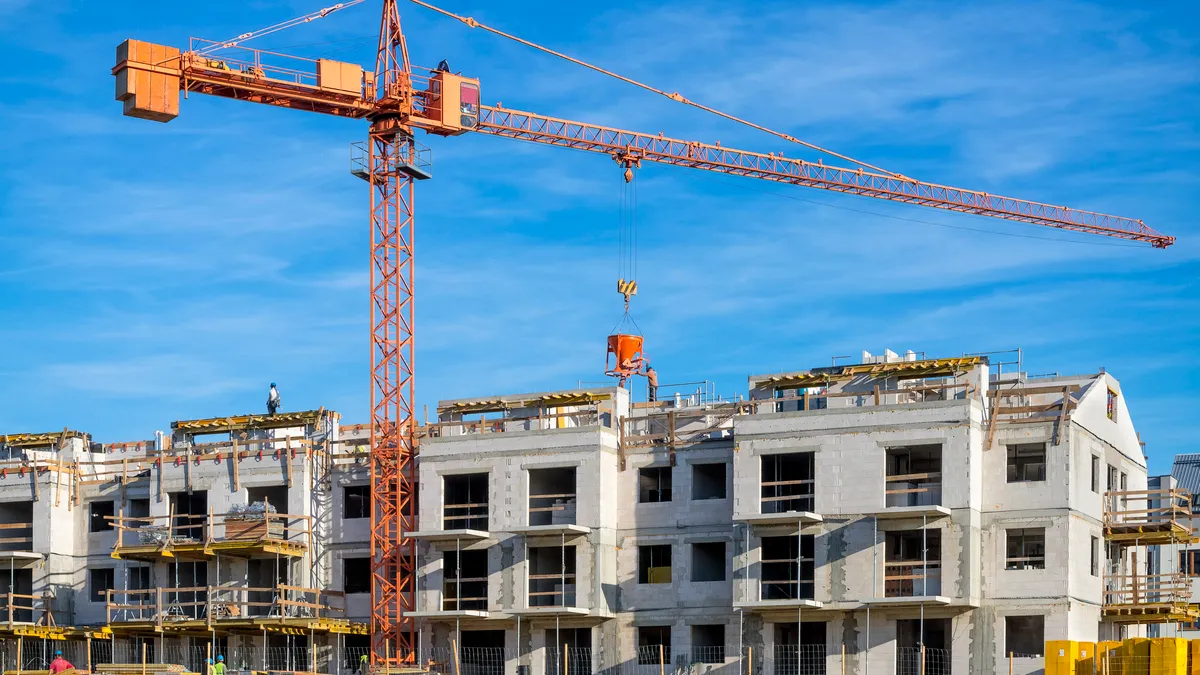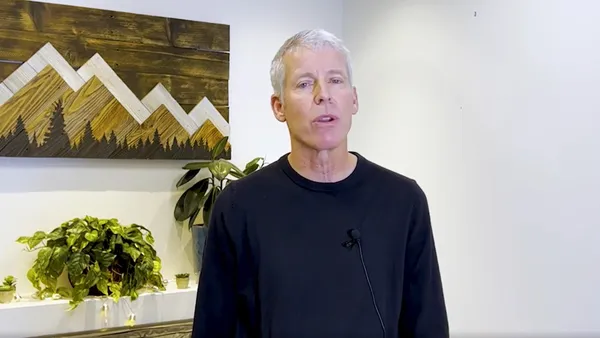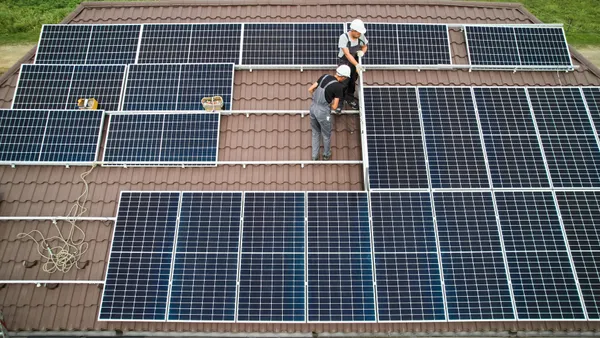As the push to reduce embodied carbon in buildings accelerates, research, advocacy and industry groups are releasing guidance for local governments on how they can support the transition to more climate-friendly building materials.
Embodied carbon is the name for the greenhouse gas emissions associated with the entire lifecycle of building products, including extraction of raw materials, manufacturing, transportation, construction and eventual disposal. Building materials and construction are responsible for 11% of global energy-related carbon emissions.
The U.S. Green Building Council and think tank RMI on Tuesday published a report outlining key actions to accelerate the decarbonization of U.S. building construction. While it was geared toward industry participants, the report identifies a role for local governments.
“Governments must prepare the way for embodied carbon regulation by investing in low-embodied carbon public buildings and supporting research and market development of low-embodied carbon building products and practices,” it says.
The report points to “a surge” of federal and state action plans and programs to reduce the embodied carbon of construction materials. It notes that the federal government and some state governments have recently launched “Buy Clean” initiatives, which promote the procurement of low-embodied-carbon construction materials.
“Buy Clean” efforts target high-emission materials such as concrete and steel, but the report warns governments to design these policies so they don’t “unintentionally constrain carbon cutting investments for these sectors. This could drive segments of the industry out of business without lowering overall emissions intensity of the industry or even leak emissions abroad.”
Steel and carbon will remain “important in building construction for the foreseeable future,” the report states.
Other jurisdictions have set financial incentives for projects with lower embodied-carbon emissions, the report says, highlighting the Massachusetts Clean Energy Center’s Embodied Carbon Reduction Challenge.
The report acknowledges concerns and assumptions local officials may have about reducing embodied carbon. For example, choosing lower-embodied-carbon building materials does not automatically make construction more expensive, it says. There is no consistent correlation between the embodied carbon and cost of a material, it adds.
The report also addresses the sustainability of wood: Despite it having the potential to be a renewable and even carbon-storing building material, wood can have high emissions and ecological impacts depending on where it comes from, it states. “The jury is still out” on whether using more wood will contribute to or prevent climate change, the report says, and the building industry will need to learn to distinguish between wood products with good and bad climate consequences.
A separate report that Arup and the Natural Resources Defense Council published this month also examines strategies to reduce embodied carbon in the built environment, examining the issue through a policy lens.
The report focused on the California state government and local governments to “consider feasibility more practically and specifically.” In August, California became the first U.S. state to approve a “whole-building” embodied carbon policy in its state building code, requiring most new large buildings to drive down embodied carbon through one of three pathways.
The report recommends that policymakers focus more on policies that encourage embodied carbon reductions at the project and building scale; many emerging policies instead address the carbon performance of the materials themselves.
“Building code policies can direct designers towards more efficient resource use which, when paired with material-level decarbonization driven by ‘Buy Clean’ type policies, sets us on a scalable pathway to net zero,” said Lauren Wingo, senior structural engineer at Arup, in a statement.
Lauren Kubiak, a senior scientist at NRDC, said in a statement that existing technologies and strategies to decarbonize construction materials “need a policy push to be more widely adopted.”





















